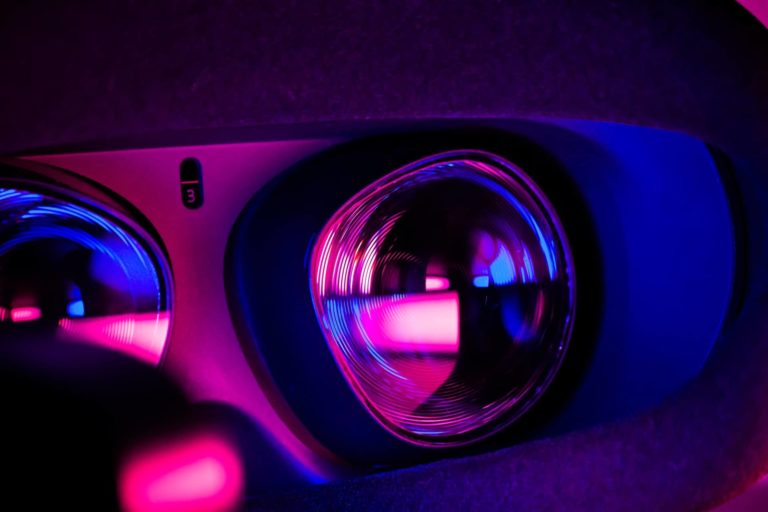
VR is edging from entertainment novelty to clinical mainstay. For VR developers, the data hints at a wave of therapeutic apps that feel more like interactive biomechanics than meditation tapes. A new study shows promise in evaluating and treating people with stubborn lower-back pain.
Inside the 2025 Lumbar Study
Researchers in Valencia, Spain, recruited 50 adults with long-standing, non-specific low-back pain. Each participant bent backward until discomfort began. While they moved, VR software secretly tweaked what they saw:
- Under-representation (less than 10%): The avatar showed less extension than reality.
- Accurate feedback: The avatar matched real motion.
- Over-representation (more than 10%): The avatar showed more extension than reality.
When visuals understated the true bend, participants reached 20% more range of motion before pain kicked in — compared with accurate feedback — and 22% more than in the over-representation condition. The boost was most significant in users who feared movement.
The experiment found that cleverly altered visuals inside a headset can raise movement-evoked pain thresholds for people with stubborn low-back pain.
How the Finding Fits a Broader Evidence Base
Momentum has been building over the past years. An umbrella review published in 2023 pooled 21 systematic reviews covering 274 studies and 17,680 patients — it reported successful VR analgesia across perioperative, procedural and chronic settings in children and adults.
The U.S. Food and Drug Administration (FDA) is already convinced. Approval of the home-use RelieVRx system rested on a randomized trial of 179 people with chronic low-back pain. Eight weeks of 3D VR cut pain by at least half in 46% of users versus 26% for a 2D sham.
Demographics Will Amplify Demand
The therapeutic addressable market keeps growing — analysts project a 40% increase in the global population aged 60 and older by 2050. Back pain prevalence rises sharply with age, and older adults often prefer drug-free options that avoid sedatives or opioids.
Why Tiny Visual Tweaks Can Trump Big Drugs
Pain is tied to expectation. By lowering the visual threat signal, VR may dampen nociceptive processing in the insula and sensory cortex — areas that opioids also modulate. The Spanish trial shows that a 10% illusion works — future code could individualize the percentage in real time.
Developers can stay practical with linear regression — a supervised learning workhorse. The technique lines up several inputs — head tilt, latency, haptic strength — to predict a single output, such as how far a user can move before pain sparks. Because healthcare and insurance analysts already rely on linear regression for quick what-if forecasts, feeding headset telemetry into the same model is an easy win for fine-tuning settings in real time.
What Builders Can Tackle Next
VR’s analgesic ceiling is high, but it needs hardware-software ecosystems that respect aging users and clinical workflows. Before diving into features, consider these design fronts:
- Adaptive biofeedback loops: Surface electromyography (sEMG) can stream paraspinal activation into the engine. When a muscle group starts to fatigue, visuals could automatically downshift intensity, keeping users inside their safe zone.
- AI-guided dosing schedules: Supervised models can forecast when a user is likely to plateau. The app might nudge them from daily to every-other-day sessions or swap in cognitive-behavioral modules for variety.
- Cloud-delivered home programs: Stand-alone headsets now run on mobile chips powerful enough for real-time pose estimation. Sending only anonymized kinematic data to the cloud keeps privacy intact while letting clinicians track progress asynchronously.
Comfort, reimbursement, and standardization remain hurdles, but none are show-stoppers. Light shells with easy-clean gaskets solve headset fatigue, built-in pain surveys exported as simple comma-separated values (CSVs) satisfy pay-for-performance rules, and a common outcome set — like range-of-motion plus visual analog scale (VAS) — will keep regulators, payers, and researchers speaking the same language.
Opportunities Beyond the Spine
Developers stand at an intersection of gaming tech, clinical evidence, and demographic urgency. The Spanish study proves that a few degrees of visual trickery can unlock real biomechanical change, while the 2023 review and FDA-cleared devices confirm wide-spectrum benefits.
Treat VR not as a fancy screen but as a programmable layer between perception and physiology. If you can master that layer, you’re not just building software — you’re rewriting the pain script for millions. The next breakthrough could come from your dev kit.
 Eleanor Hecks is Editor-in-Chief of Designerly Magazine where she specializes in design, development, and UX topics. Follow Designerly on X @Designerlymag.
Eleanor Hecks is Editor-in-Chief of Designerly Magazine where she specializes in design, development, and UX topics. Follow Designerly on X @Designerlymag.

